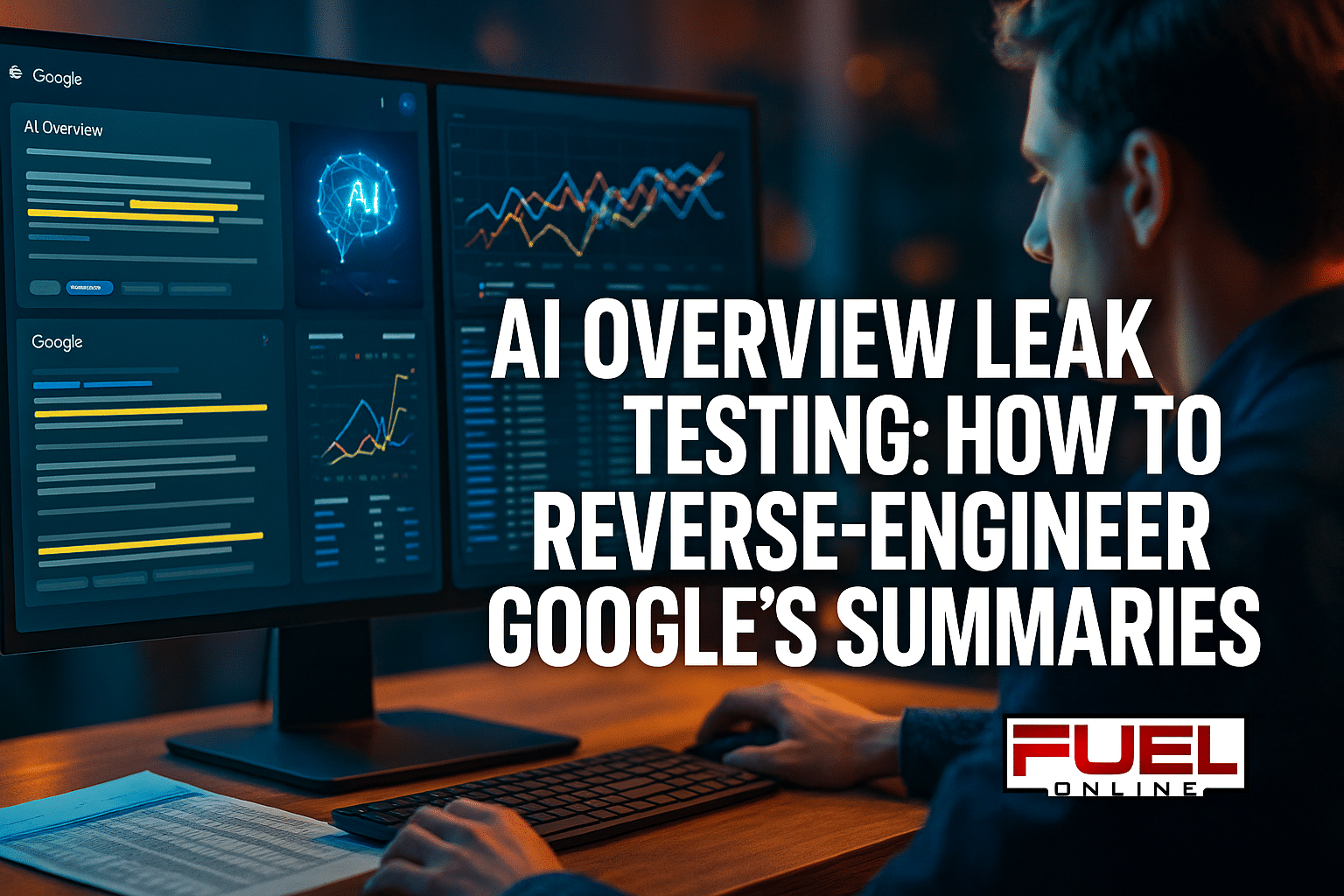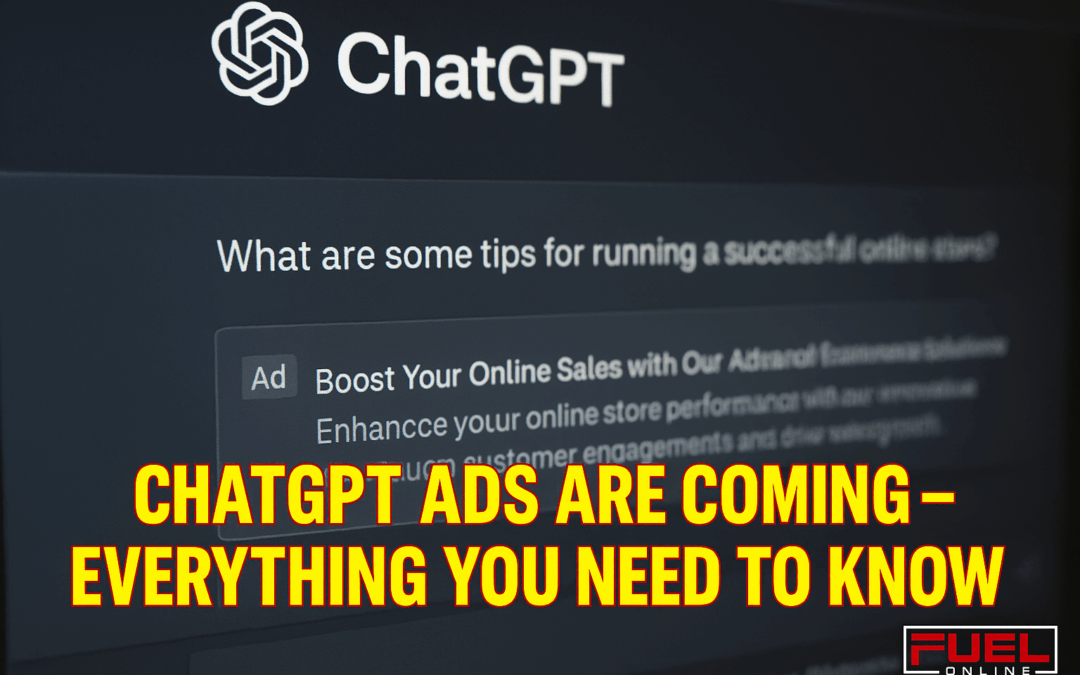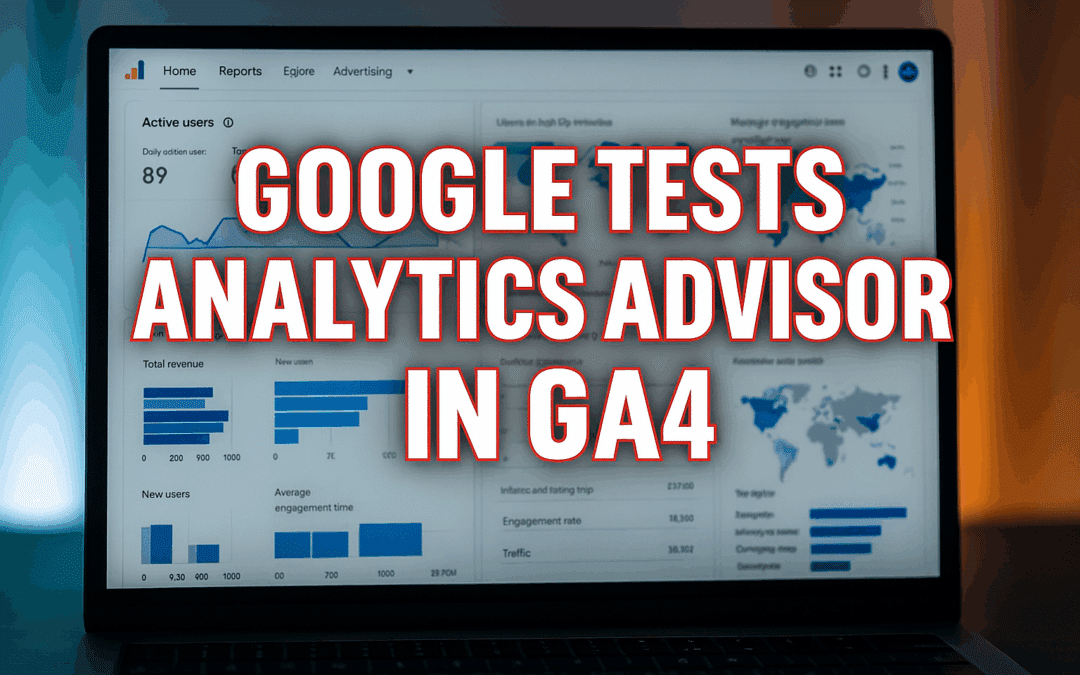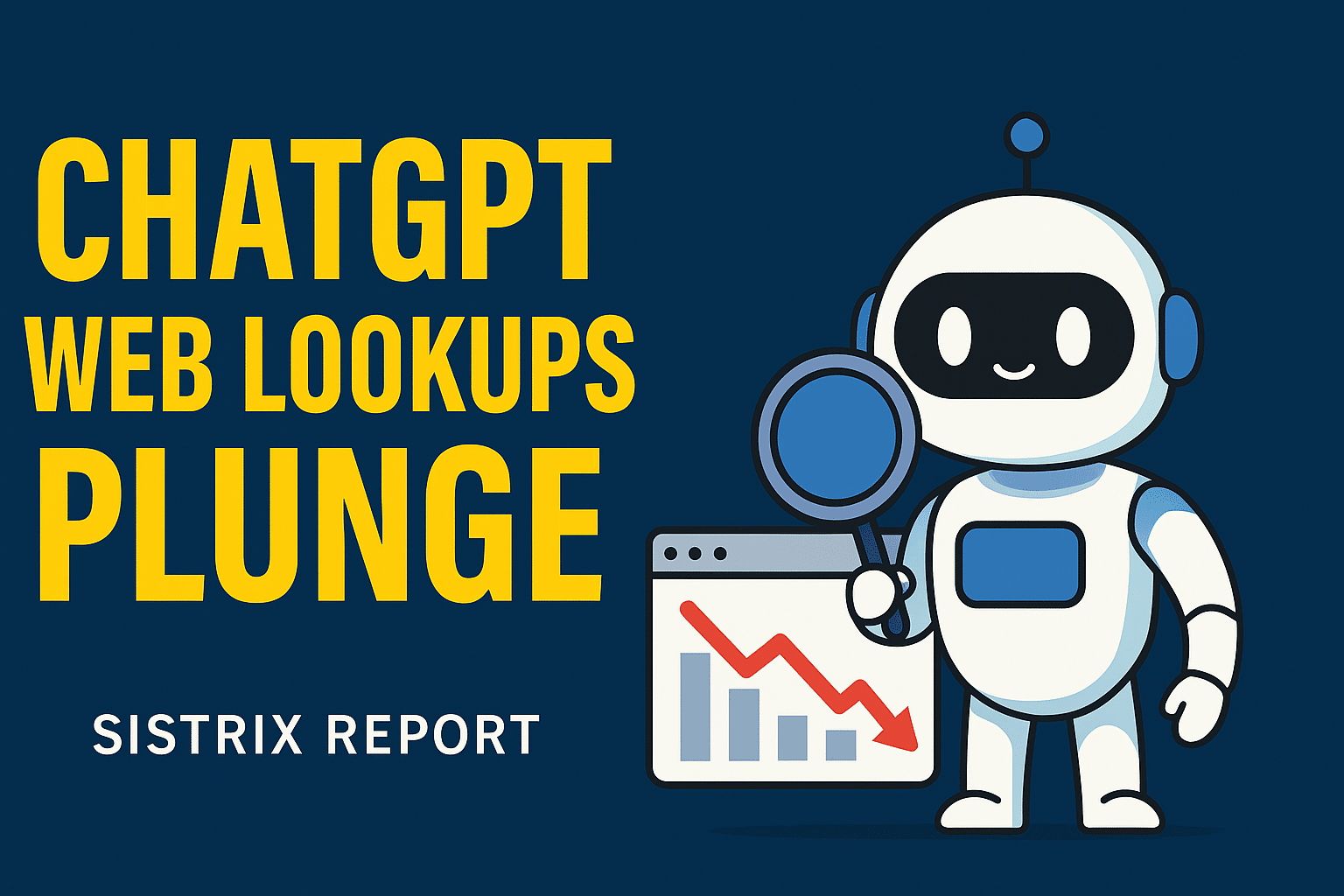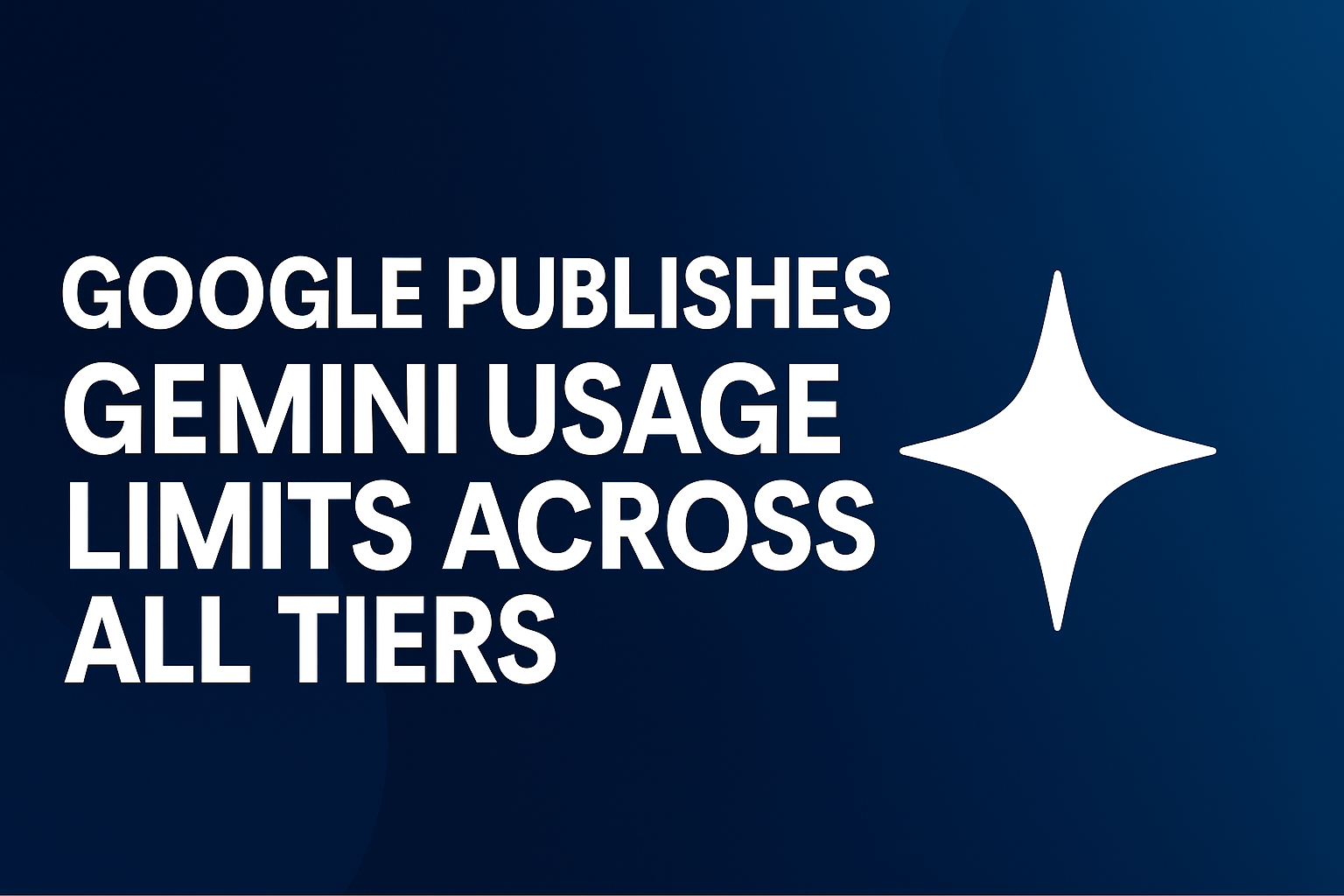By Scott Levy, CEO of Fuel Online
If you’re an SEO director, CMO, or VP of Digital or even a Business Owner right now, you’ve already felt the tectonic shift.
Google’s AI Overviews are no longer a novelty—they’re rapidly becoming the front page of the internet.
The stakes? Your brand either shows up inside those summaries… or disappears entirely from the conversation.
At Fuel Online, we’ve spent decades adapting to every major search shift—mobile-first indexing, RankBrain, BERT, you name it. But the rise of AI-generated search answers is different. This isn’t just about traditional rankings. This is about controlling the narrative inside an AI-generated box that eats up more real estate than any organic result.
And to win, you need to stop guessing and start leak testing—a systematic way to probe Google’s AI Overviews until you know exactly what it takes to get cited, mentioned, or referenced.
What Is AI Overview Leak Testing?
Leak testing is my term for a controlled, repeatable probing process designed to reverse-engineer how Google decides what information—and which brands—get placed inside AI Overviews.
Think of it like a wind tunnel for your AI SEO strategy. You don’t guess if your brand will perform well; you run hundreds of controlled tests until the results tell you exactly what’s working.
This is where AI SEO agencies that actually do research (instead of recycling blog posts) separate from the rest. A real AI SEO strategy today isn’t just about optimizing a page—it’s about optimizing the entity that feeds the AI answer system.
Why This Matters for AEO & GEO
When we talk about AEO (Answer Engine Optimization) and GEO (Generative Engine Optimization), we’re talking about more than keyword targeting. We’re talking about training the machine to associate your brand with specific topics, queries, and answers.
Leak testing gives you data—the actual DNA of how Google’s AI Overview selects, compiles, and presents information. Without it, you’re just guessing while your competitors test, adapt, and take the real estate you should own.
The Fuel Online Leak Testing Methodology
I’m going to give you the exact framework we’ve refined in-house—no fluff, no buzzwords. This is the same process we use to help brands own AI Overview space.
Step 1: Build Your Query Universe
-
Identify core commercial queries (buying intent).
-
Layer in educational queries where you can add authority without sounding like an ad.
-
Include GEO-modified queries (city, state, region).
-
Tag queries by intent type (transactional, informational, navigational).
The key is volume—you want at least 200–300 queries to get statistically meaningful data. This is not a “check a couple keywords” exercise.
Step 2: Run Controlled AI Overview Captures
-
Use fresh, signed-out browser sessions or clean proxies to avoid personalization bias.
-
Capture full AI Overview responses, including:
-
Text content
-
Source citations
-
Linked domains
-
Brand mentions (even if not linked)
-
We store this in a master spreadsheet (columns for query, date, AI text, citations, mentions, and notes).
Step 3: Identify Entity Bias
Google’s AI Overviews pull from trusted entities first. If your brand doesn’t have strong entity connections in the Knowledge Graph and across structured data, you’re starting from behind.
During analysis, we:
-
Count brand appearances.
-
Count competitor appearances.
-
Note whether the brand is cited, linked, or simply referenced.
Step 4: Map Content Triggers
Every AI Overview answer is the output of an internal prompt + retrieval system. By tracking hundreds of responses, we see patterns:
-
Certain phrases or schema types appear repeatedly in cited content.
-
Certain domains are favored for specific topics.
-
Content format (lists, step-by-step, plain text) impacts inclusion.
Step 5: Decision Rules for Optimization
Here’s where it gets actionable:
-
If your content is ranking in organic but not showing in AI Overviews → Adjust entity data & structured markup.
-
If competitors with weaker authority appear instead → Analyze their format, tone, and data structures.
-
If citations skew toward certain domain types → Secure backlinks or placements on those domain types.
What Makes This Different From “Regular SEO” Testing?
Traditional SEO testing is static—change a title, test a link, see a ranking shift.
AI Overview testing is dynamic—Google’s AI answers change constantly, sometimes day to day.
You’re not chasing “position one” anymore—you’re chasing narrative inclusion. The skill set is closer to PR meets data science than old-school SEO.
Why CMOs and SEO Directors Should Care
Your marketing budget can’t afford invisible wins. You might still be getting traffic in traditional blue links… but the AI Overview is eating half the clicks before they ever scroll.
Leak testing:
-
Protects your brand narrative.
-
Keeps you ahead of algorithm shifts.
-
Turns AI SEO from a buzzword into a measurable, boardroom-ready strategy.
The Future: From Leak Testing to Predictive AI SEO
Today, leak testing helps you diagnose.
Tomorrow, it will help you predict—using trend modeling to anticipate the queries where you’ll want to be the cited authority before the AI Overview starts featuring them.
We’re already building models at Fuel Online to bridge that gap. The agencies that master this now will own the AI Overview real estate when everyone else realizes they’re late.
Bottom line:
If you’re not running AI Overview leak tests, you’re playing blindfolded in a game where the rules are still being written.
If you are running them—and making decisions from that data—you’re not just reacting to Google’s AI future… you’re shaping it.

